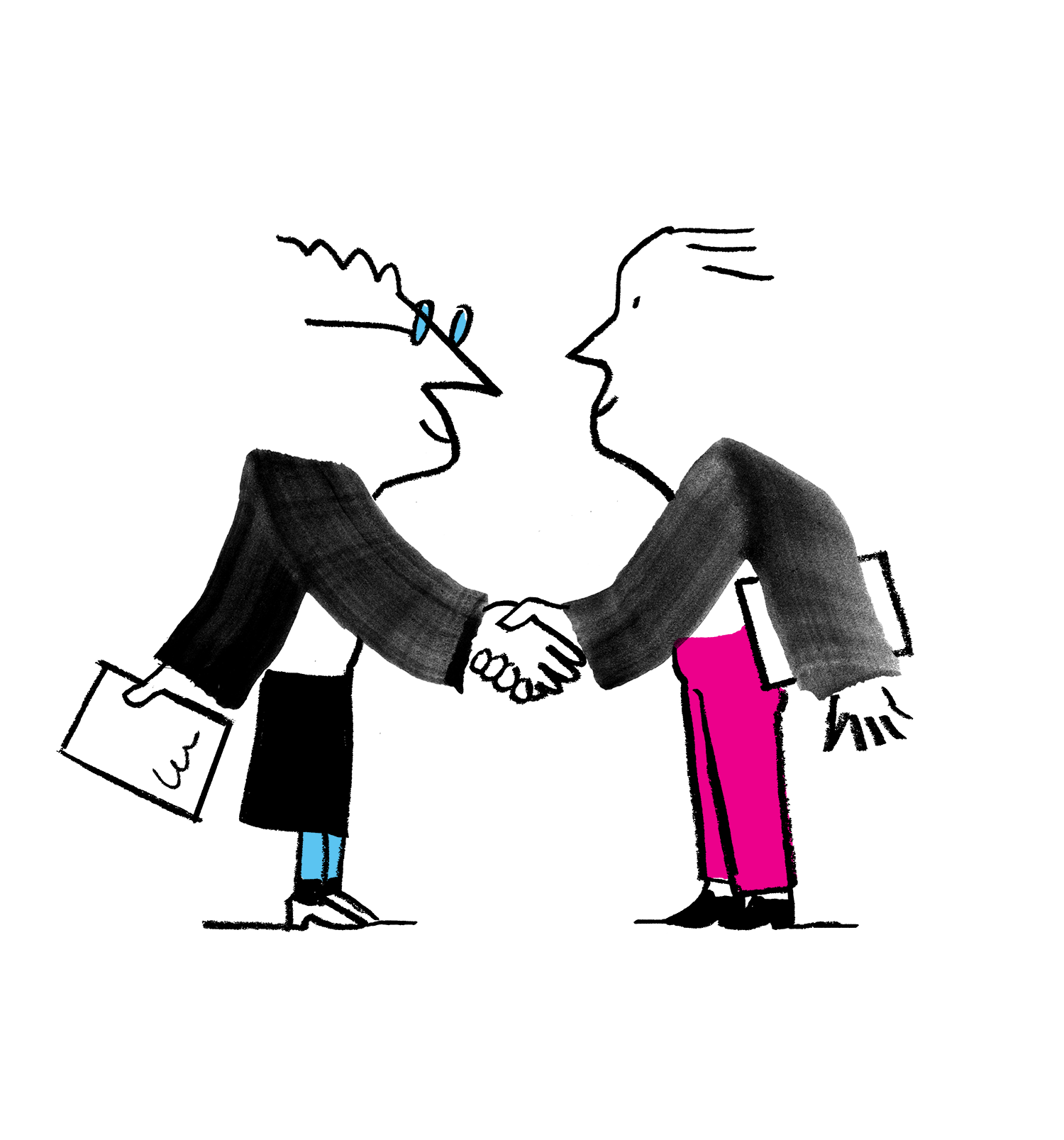How to licence Illustration Free
In this article
Illustration is great! It’s one of the fastest growing areas of the creative industries; it tells stories, sells products, and is globally relevant. When you pay for (commission) illustration, you buy a licence and not the work itself. It means you pay for what you need without buying it outright. This is called the licensing model.
This resource sets out the industry standard for commissioning illustration, we also have created this illustrated Downloadable PDF which can be shared worldwide to aid understanding. If you have questions after reading it, just let us know.
What do you mean by “licensing model”?
When an artist creates an artwork, regardless of whether it was commissioned, they automatically own the ‘copyright’ of that image. This means that they control the reproduction of the artwork.
The artist can then sell a licence for that artwork – which means someone else has the right to reproduce it, in specific ways, for a specific amount of time.
A license can be ‘exclusive’ meaning no one else can use that image while your licence lasts, or ‘non-exclusive’ meaning that anyone can licence the work from the artist at any given time.
The image itself still belongs to the illustrator. If the artwork is delivered physically, you must return that – typically it is digital and will be a flat file that you cannot edit.
So, how is a licensing fee worked out?
Licensing means that you pay for what you need. It’s not about the time taken by the artist, or their experience – it’s about how the image will be used.
For the illustrator to give you a quote you’ll need to give them the following details:
Territory: Which territory will the image be used in? e.g. UK / USA / Worldwide
Duration: How long it will be used for? e.g. 6 months / 1 year / 3 years / 5 years
Usage: What it will be used for? e.g. billboards / newspaper / social media
Client: Who will be using it? e.g. a big multi-national / small business / newspaper
The illustrator will then come back with their quote. They will strive to get this back to you as soon as is possible, but note this can often take a day or longer
Negotiating a Fee
Everything can be negotiated. Some people love negotiation – others not so much – however you feel about it, being really clear with the project details makes it quicker and easier.
If you know your budget, it will save everyone a lot of time if you can tell the illustrator what it is. There are lots of ways they can shape their quote to fit – limiting the licence, reducing the number of illustrations and amends, focusing on a particular style.
The AOI has a calculator members can use to help them consider typical market rates.
Things that can make a budget increase include rush jobs, asking the illustrator to travel to meetings, adding usages, more illustrations, or additional amends to artwork.
Agreeing Terms
All commissions must have a written agreement. All AOI member illustrators have a fair template agreement that can be used. At a minimum any agreement should include; the fee, the deadlines for the roughs and finished artworks, and the licence (where, how and for how long you will reproduce the work).
Receiving the Artwork
The illustrator will submit roughs for your consideration – these are usually pencil drawings showing the composition / characters. Any feedback should be clear, as the fee usually includes up to 3 revisions of roughs. Further revisions are usually charged at an agreed rate.
When you have approved the roughs, they will develop them into the finished artwork. At that stage it is usual for up to 3 minor amends if needed.
There may be some cases where you have to reject the artwork. The following rejection/cancellation fees are industry standard;
25% of the agreed fee if the work is rejected at rough stage.
33% – 50% of the agreed fee if the artwork is rejected on delivery (depending on where any fault lies)
100% of the agreed fee if the commission is cancelled on the delivery of artwork.
We are the Association of Illustrators, the professional body for the illustration industry. We are a global leader, based in the UK, with members and partners around the world. We work to ensure a thriving industry today – and in the future. You can contact us and find out more on our website, or follow us @theaoi
Illustrations by AOI Member Franz Lang

